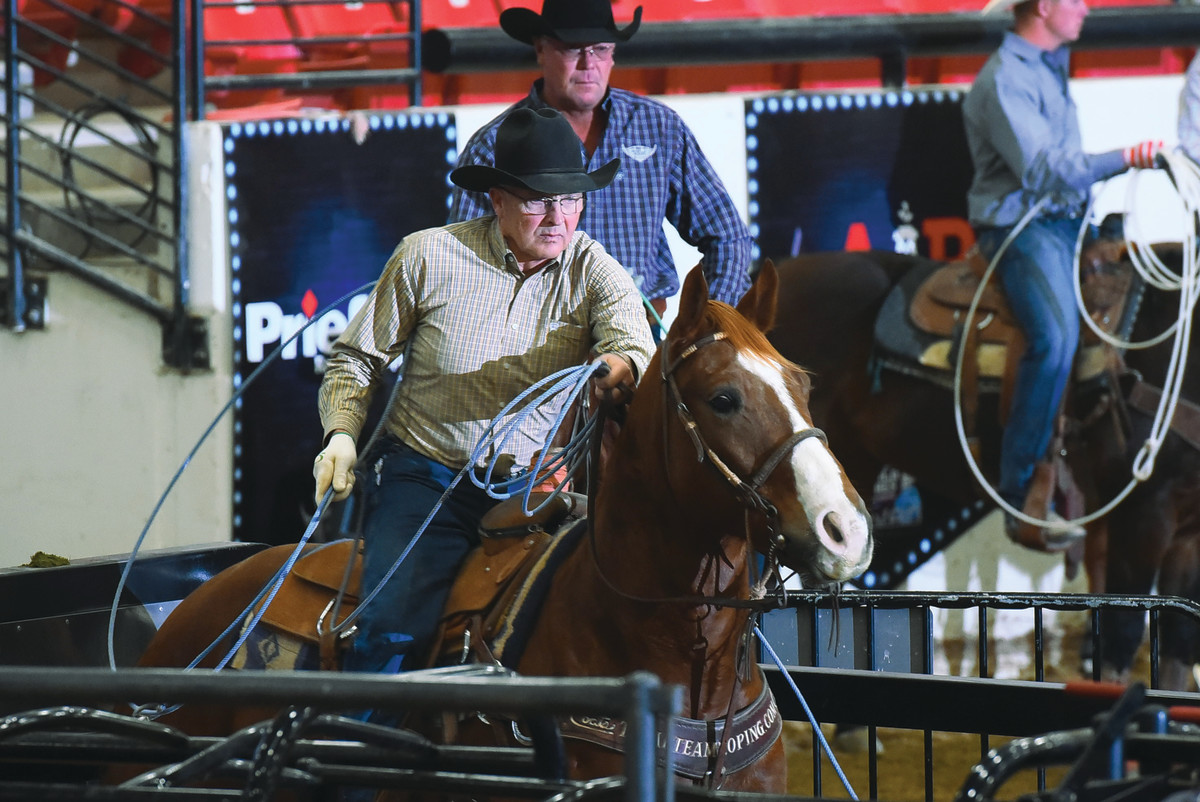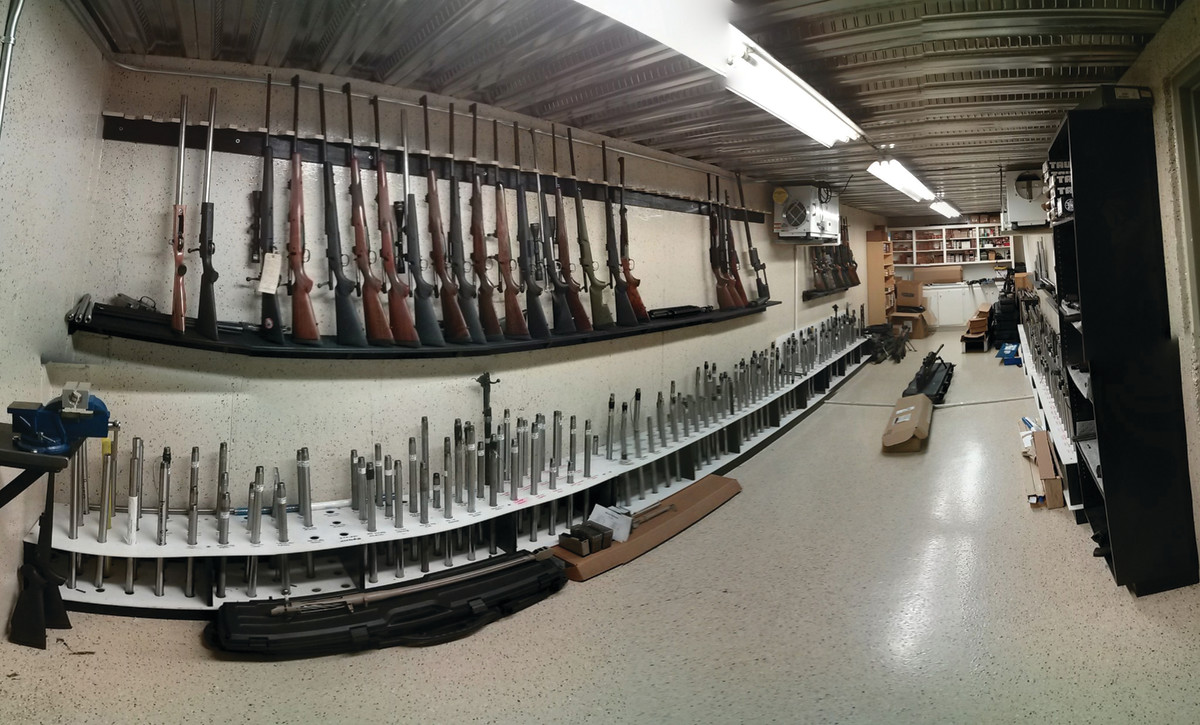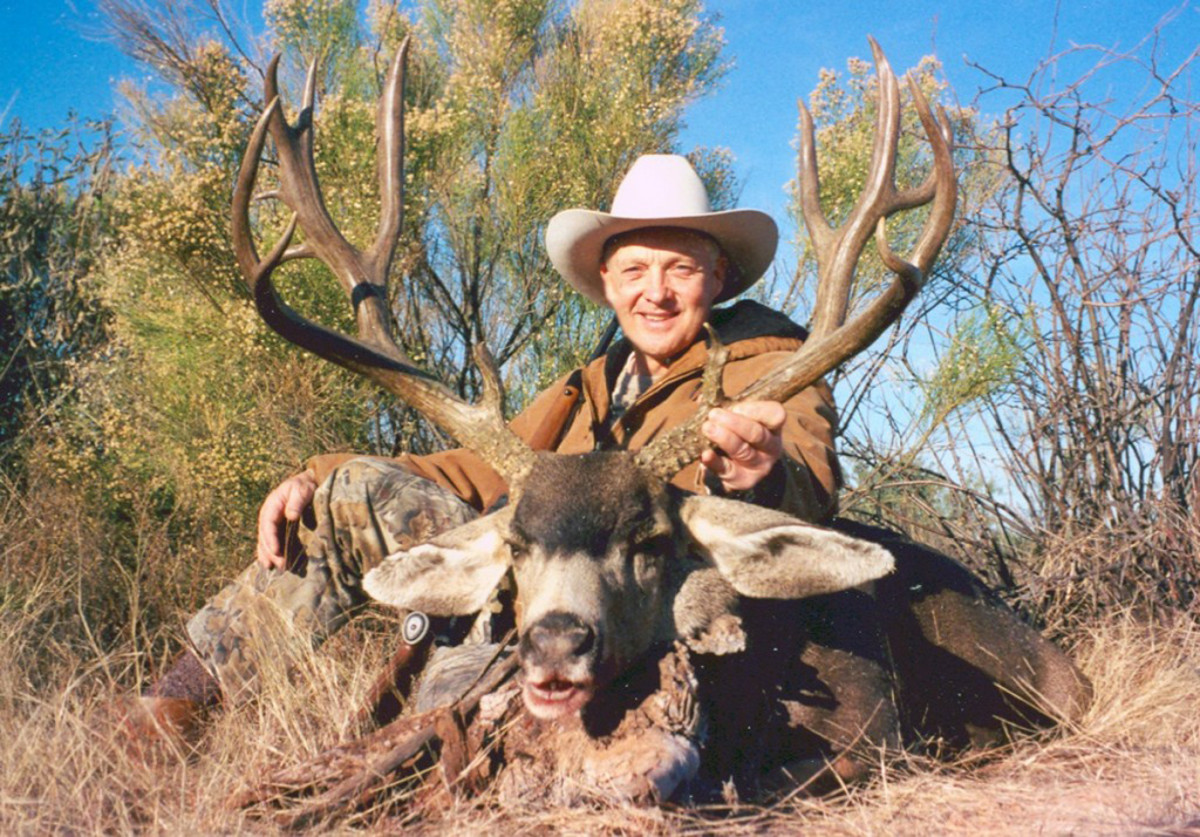It drilled Osama bin Laden above the left eye, that bullet fired by a Navy SEAL’s HK416 early one morning in Pakistan seven years ago. The head shot ended a decade-long manhunt for the mastermind of the 9/11 attack that killed 3,000 and shook our country to its core.
The team roper who invented that bullet? He’s a 4-Elite header from Utah.

Randy Brooks’ company advertises its ammunition as “optimized for your target.” That’s fitting, because Brooks has been optimizing everything he touches his entire life. The son of a steel-mill worker and schoolteacher in small-town Utah, Randy married his wife, Connie, 48 years ago. They bought a 24-by-24 house for $3,500, then rented it out and headed to Colorado, where Randy worked for his uncle’s dairy. He also tried a saddle-making gig in New Mexico, but that didn’t work out.
Always a hunter, Randy aspired to be a shooter. So, even while milking cows, he had a little side business custom-loading firearms. When Barnes Bullets came up for sale, he and Connie scraped together the meager amount of cash it was worth.

“Our gross sales were just under $8,000 the first year,” recalled Brooks, who began putting bullets together in the basement of that 560-square-foot Utah house. “We worked so dang hard I can’t even tell you. We weren’t smart enough to know we couldn’t make it. I have a photo taken in 1974 of my two girls, Jessica and Chandra, when they were toddlers working in the shop, putting cores together with jackets.”
Randy came up with the idea of an expanding all-copper bullet while hunting brown bear in Alaska, and it went on the market in 1986. The revolutionary “X bullet” was followed up by several custom bullets and reloading components. By 1994, Barnes Bullets needed a new 40,000-square-foot manufacturing facility.
For the record, copper bullets offer almost a third deeper penetration than lead-core bullets and can be loaded to higher velocities. And Brooks’ version had precisely engineered grooves cut into the shank, plus polymer tips and a boattail design, for long-range accuracy.
That was important to Brooks, who went into the Army Special Forces at age 18. He still had contacts with them, and his ideas in the early 1990s had military application.
“It makes you feel good when your sniper bullet gets a contract in the Gulf War,” said Brooks, whose 50-caliber bullets set multiple world records at 1,000 yards. “I’m most proud of the ammunition we built and designed for the Navy, which the SEALS use.”
Brooks had jockeyed his grandfather’s racehorses as a kid, and tried roping for the first time in New Mexico.
“It’s a great challenge to me,” he said. “I’ve always admired ropers. I’m not a team sport guy; I was into things like wrestling and tennis and motocross in high school, because I like to rely on myself.”
Brooks was still busy refining and upgrading bullets in 2006 when an Idaho friend badgered him into picking up roping again. He bought a horse and, a few months later, entered the inaugural World Series of Team Roping Finale.
“I jumped in with both feet like I do everything in life, I guess,” he said. “I had a pretty heavy hand, from riding those racehorses that run off the bit. So I fought that for a lot of years before I figured out how to ride a rope horse.”
Brooks had already figured out how to best kill predators. Hunters knew they could depend on a one-shot kill with a Barnes bullet and could snag varmint pelts without exit wounds. In 2007, the company moved into a new 75,000-square-foot facility in Mona, Utah.

“I’m so inquisitive that I drive forward until I figure out how I can make this better; faster,” Brooks said. “That goes for team roping, too. How can I be better; faster? I turned 69 last month, and I promise to get my number raised this year. That’s going to make me happy, and it will if I get raised again next year. That’s what I do. I go as hard as I can at something, put all my resources into it, and let the chips fall.”
In 2010, Brooks sold Barnes Bullets to Remington—the world’s leading maker of firearms and ammunition. But even then, he remained committed. He continued working for five years instead of the two for which he was contracted and paid.
That allowed him to optimize his roping practice. Brooks built an indoor arena 225 feet wide and 350 feet long, and had already started hiring Charles Pogue to come up and give him private lessons. Keslers recently came over with jackpot steers to break in, during which time the conversation mostly revolved around Greg’s new guns. Ropers and gun people are generally on the same page, Brooks said.
In typical cowboy fashion, Brooks is modest about his rags-to-riches story.
“I just had some really good ideas and surrounded myself with some really good people,” he said. “And I think you have to be fully committed. I’m highly uneducated—I did get a high school diploma but I don’t know how. Connie only went to college a semester. That’s what makes our story… looking back, I still don’t know how we made it.”
Maybe it has something to do with the fact that the former Green Beret is dirty tough. Brooks competed once at the World Series Finale with a torn-up pelvis and another time with a torn tendon in his foot.
“When you do full-contact anything, you play hurt or work hurt and it’s all the same,” he said. “When you’re working and almost broke or struggling, it’s just like being wounded; you just drive on. You could fold up the tent and go home, but who in the hell wants to do that?”
In the eight years since Brooks sold the company, things don’t quite look the same. Remington had itself been acquired by an enormous investment fund that also purchased five other firearm companies to form Freedom Group. However, one of those companies made the AR-15 used in the Sandy Hook elementary school shooting, and investor fallout ensued.
Freedom Group became Remington Outdoor Company and sought Chapter 11 bankruptcy protection in March. It’s still going strong, however, thanks to a restructuring agreement that reduced its debt by about $700 million and infused $145 million of new capital into its subsidiaries.
Randy’s daughter, Jessica, remains the Senior Product Marketing Manager of Remington’s Ammunition division, meaning she’s technically been with the bullet company 43 years. And in 2016, Randy’s contributions to the shooting industries won him the 2016 Golden Bullseye Pioneer award from the NRA.
“You can’t just wish you have something; you have to drive yourself toward it,” he explained. “I’ve always had this conviction within, and I listen to it. I base all my decisions on it and have my whole life. I call it the Holy Spirit; some call it a gut feeling. And if I got away from that, the decision was usually wrong.”
Now Randy Brooks’ decisions mostly hinge on his four head horses and his practice program. Katy, bar the door! Because the man who has never hit a golf ball is committed to this sport.
“I think it would be really cool, literally, to be 90 years old and be at a roping,” he said.











